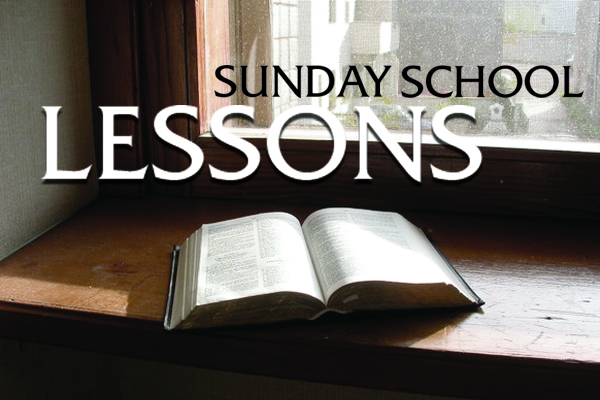By Benjamin Stubblefield, Ph.D.
Visiting Assistant Professor of Christian Studies, University of Mobile
Sacrificed
Luke 23:33–46
Mark Twain wrote: “The proper office of a friend is to side with you when you are in the wrong. Nearly anybody will side with you when you are in the right.”
People have told me I’m argumentative. But I don’t think I am. I like to be right. And I like to know that people around me think I’m right. My guess is that I’m not alone in this. The danger for people like us is that when we are wrong, we can’t see it, won’t admit it and are unwilling to repent from it.
In our passage this week, we witness people who are so committed to doing what they think is righteous that they are blind to the fact that they are committing humanity’s greatest evil.
Intensifying the heinous nature of their conduct is that they’re persecuting the pure and blameless Son of God. In this one scene, we get the most extreme juxtaposition: the depth of mankind’s unrighteousness and the height of Christ’s holiness.
Focused (33–34)
Jesus’ accusers brought Him to “the place of the skull,” a public locale mentioned in Matthew and Mark. They crucified Him between two criminals, but not before He could pray for their forgiveness. He refuses to revile or curse, threaten or abuse. Betrayal, abandonment, humiliation, slander and torture elicit only sympathy from the Savior, and He stays focused on His mission to rescue and redeem. He is unyielding in His righteous pursuit to bring forgiveness for the fallen. Friends, if that’s not love, I’m not sure what is.
Mocked (35–39)
Bystanders, rulers, soldiers and one of His fellow “crucifixees” jeer at the Lord, pouring on the insults and sarcasm. The irony of their taunts is not lost on the reader. Not only has “He saved others,” but He will be delivered, and He will save them as well.
It is important to note here that even today, as it was then, some people are very antagonistic to the claim that Christ is King. Some may be exceptionally persuasive. But the truth of who Jesus is remains unchanged. He was Lord of His enemies at His trial, at His scourging and at His crucifixion. And He is Lord of all, even still.
Trusted (40–43)
While one criminal blasphemes along with the crowd, the other realizes that Jesus is more than a Roman convict. He petitions the Lord to “remember me.” The Friend of Sinners uses some of His final breaths to guarantee the criminal’s presence in glory.
What is striking about this moment is that the man isn’t pleading for clemency from Caesar; he’s trusting in Jesus for salvation. He comes to know the truth: This bloodied Nazarene is the only way, truth and life — the only one in the world who can ever actually rescue the perishing and in no way cast him out (John 6:37).
Sacrificed (44–46)
As Jesus entrusts Himself to the Father, the sun is darkened and the temple veil is torn in two — both signs of judgment and hope. Astronomical signs are often associated with the Day of the Lord foretold in prophetic literature. This was a long-awaited day in which God would bring justice to the earth and initiate His rule. So the darkness in the middle of the day is not just a phenomenon linked to wrath but also to the hope of the kingdom of God.
Furthermore, the rent veil signifies God’s judgment of the temple. More precisely, God nullifies the chief role of the temple, namely, to be the only house in which the presence of God would dwell. Moreover, the rent veil illustrates that in the work of a new High Priest and sufficient sacrifice, anyone can “draw near” to the presence of God through Him (Heb. 4:16; Eph. 3:12). Because of the finished work of Christ, whoever whenever can come before the throne of grace. The curtain that had for so long denied access to God’s presence has been split.




Share with others: